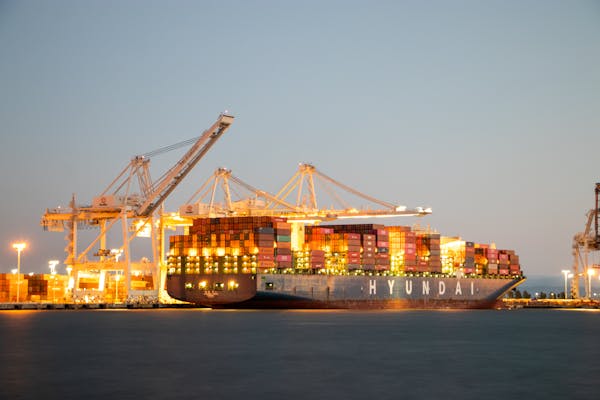Shipping Construction Equipment from Guangzhou/Shenzhen to Guam: Sea Freight Options, Packaging, and Transit Time
1. Shipping Options: FCL vs. LCL
Full Container Load (FCL): For large machinery like a slotting machine, using a Full Container Load (FCL) is often the best option. When you choose FCL, the equipment occupies the entire container, offering a secure and dedicated space for the cargo. For shipment from Guangzhou or Shenzhen to Guam, you can opt for either a 20-foot container (20FT) or a 40-foot container (40FTC). FCL provides greater security as your machinery will not be mixed with other goods, and it’s typically a faster, more cost-effective method for larger shipments.
Less-than-Container Load (LCL): If you’re shipping smaller quantities or sharing container space with other cargo, the Less-than-Container Load (LCL) option may be more appropriate. In this case, the machinery will be loaded into a shared container along with other goods, and the cost will be based on the volume of the cargo. This is a more economical solution for smaller shipments but may take a little longer as the container has to be consolidated with other goods.
2. Transit Time and Route
From Guangzhou/Shenzhen to Guam, the estimated sea transit time is around 8 days, assuming favorable weather conditions and minimal delays. Shipping options like FCL and LCL typically use regular weekly sailings, meaning that containers are usually shipped on a bi-weekly (隔周) schedule. The sea route will generally pass through major ports in East Asia, with a direct connection to Guam, one of the primary ports in the Pacific.
- Estimated Transit Time:
- FCL: Approx. 8 days
- LCL: Approx. 8 days, but may vary depending on consolidation schedules.

3. CIF (Cost, Insurance, Freight) Shipping
For both FCL and LCL shipments, opting for a CIF (Cost, Insurance, Freight) agreement is a common choice. Under CIF, the shipping company covers the costs of transporting the cargo, the marine insurance, and the freight charges up to the port of destination (in this case, Guam Port). This ensures that the equipment is protected during transit and that the seller takes responsibility for these costs until the goods reach the destination port.
4. Packaging Considerations
Proper packaging is crucial for ensuring the safety and security of heavy machinery like slotting machines during transit. Here’s how to properly package such equipment for sea freight:
Wooden Crates:
Heavy machinery should be placed inside custom-made wooden crates to protect against impacts and moisture. The crates should be sturdy and able to withstand the weight and size of the machinery. These crates are often lined with water-resistant materials to guard against potential moisture during the journey.Palletization:
In some cases, the slotting machine can be mounted onto a wooden or metal pallet for easier handling, especially if using LCL shipping. The pallet allows for smooth loading and unloading and keeps the equipment stable during transport.Securing the Machinery:
To prevent the equipment from shifting during transit, it is crucial to secure the machinery within the crate or on the pallet. Use strong straps or ropes to fix the machinery in place, reducing the risk of damage during the rough conditions of sea transport.Labeling and Documentation:
Each crate or package should be clearly labeled with the correct shipping information, including the consignee’s details and a description of the cargo. It’s also important to ensure that all necessary shipping documents, such as the bill of lading and insurance certificates, are correctly filled out and included.
5. Port to Port Transport and Delivery
Upon arrival at Guam Port, the cargo is subject to customs clearance before being delivered to the final destination. Depending on your service agreement, the next steps may include door-to-door delivery or simply the offloading of the cargo at the port for pickup.
For businesses shipping heavy machinery, it’s important to work with experienced freight forwarders or logistics providers who specialize in heavy and oversized cargo. They can ensure that the correct permits are obtained, the necessary equipment for loading and unloading is available, and the shipping schedule is adhered to.



